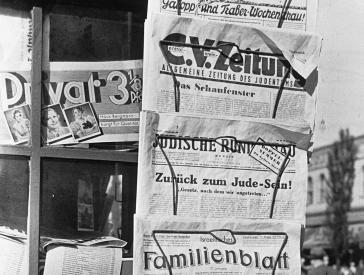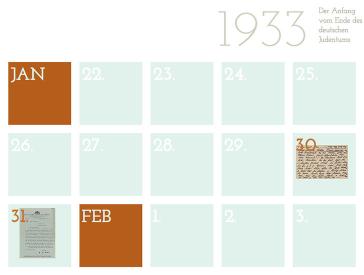Launch of the Online Project "1933. The Beginning of the End of German Jewry"
Press Information
Press Release, Tue 29 Jan 2013
On 30 January 1933, Rosa Süss from Mannheim wrote to her newly wedded daughter Liselotte and son-in-law: "So today Hitler is Chancellor - that will be pleasant company - but they put their pants on one leg at a time like the rest of us, and we shall wait and see what happens!" This letter marks the beginning of the online project "1933. The Beginning of the End of German Jewry." Alongside the letter, visitors will also receive insights into the Süss family's lives and fates marked by anxiety and hope. With this, the Jewish Museum Berlin launches the theme year "Destroyed Diversity." Each week until the end of December, selected historical records from the year 1933 will be published on this website. The over 110 documents will each relate to that particular day 80 years ago. An image of daily life from the perspective of German Jews in the year 1933 will gradually emerge.
- Kontakt
-
Press office
T +49 (0)30 259 93 419
presse@jmberlin.de
- Address
Jewish Museum Berlin Foundation
Lindenstraße 9–14
10969 Berlin
"During the course of 1933, more than 300 decrees, regulations, and laws interfered with the lives of all German Jews. The selected documents are direct evidence of the discrimination and persecution politics of this time. They throw light on selected biographies and illustrate the rich diversity of Jewish life present in Germany before 1933," explains Aubrey Pomerance, head of the archive at the Jewish Museum Berlin and the Leo Baeck Institute.
The project presents very varied sources - official and personal letters, postcards, certificates, identification cards, applications, reports, diary entries, notes, and photos. Nearly all of these stem from private donations and bequests kept by the museum's archive and the Leo Baeck Institute. Transcriptions and multimedia features enable these to be accessed by individuals.
The online presentation sets the sources in their biographical and historical contexts and illuminates the fates of individuals and families. Only then do the existence-threatening consequences of a sober letter from the authorities become clear, can the expression of solidarity for a Jewish sports club chairman be interpreted, or the photo be appreciated of the first school day of a boy who was forced to leave Germany just a few years later.





